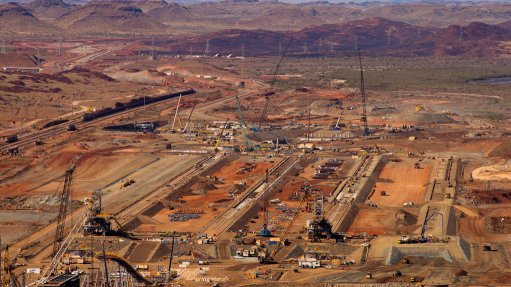
PERTH (miningweekly.com) – Mining giant Rio Tinto’s iron-ore CEO Andrew Harding has maintained that the company would not look to cut its iron-ore output in the Pilbara, despite declining commodity prices.
“There has been a view that Australia can simply turn the iron-ore tap on and off to regulate the global, market-based price. It just doesn’t work like that,” he said in Perth on Thursday.
“We are vigorously competing against global suppliers for market share. If we stop doing that, the Pilbara producers will lose and Australia will lose. It’s that simple. If my leadership journey has taught me one thing, it’s that your competitors will happily relieve you of your market share if given even half a chance.”
Rio recently completed its Pilbara 360 project, which increased the Pilbara production capacity to 360-million tonnes a year through the addition of the Cape Lambert Port B, which increased overall capacity at Cape Lambert port to more than 200-million tonnes a year.
The miner was also implementing more than 400 initiatives across its Pilbara operations to drive down costs and improve productivity. In addition, the miner was also hoping to save an additional $200-million a year in maintenance costs over the next three years, by using predictive analytics and enhanced maintenance planning systems.
Harding has remained positive about the outlook for iron-ore demand in the long term, despite the current severe downturn in commodity prices.
He said Rio’s projections were that global iron-ore demand would reach three-billion tonnes by 2030, a 2% average yearly increase from current levels.
“And we expect over half of the expansion in global iron-ore demand will be supplied through the seaborne market - Australia and Brazil predominantly.”
He added that emerging markets other than China would play a more important role in the demand for iron-ore, with Rio expecting non-Chinese demand for steel to increase by 65% in the period to 2030, with Association of South-East Asian Nations economies and India playing key roles.
“Chinese demand will remain critically important, with steel production expected to grow at a rate of 1% a year, from a very high base. This is good news for low-cost iron-ore producers and it will be great news for Australia.”